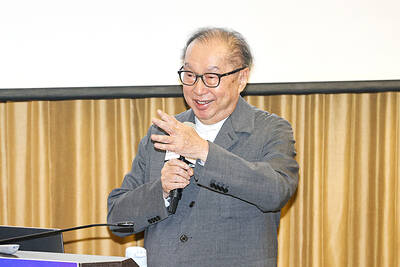The global market for integrated-circuit packaging materials is expected to continue on its growth trajectory based on solid demand for mobile devices, international industry association SEMI said yesterday.
In a research report, SEMI said the IC packaging material market is expected to keep growing from the estimated US$19.3 billion last year to as much as US$21 billion by 2017.
SEMI divided the IC packaging material market into a wide range of segments, such as organic substrates, lead frames, bonding wires, mold components and thermal interface materials.
It said the organic substrates segment remains the largest in the global IC packaging market, though it has faced continued downward pressure in pricing.
The segment was predicted to rise to more than US$8.7 billion by 2017 from an estimate of US$7.4 billion last year.
SEMI said that many other packaging material segments are also facing slowing sales growth as end users seek lower-cost solutions for packaging.
Downward pricing pressure is severe, it added.
The industry has, however, offset pricing concerns with a transition to copper and silver bonding wires, in the face of rising prices for gold in wire bond packages, it said.
Explosive growth in mobile computing and communications devices, such as smartphones and tablets, was identified as the driving force behind continued growth in several segments of the IC packaging materials market.
Segments buoyed by mobile devices are chip scale packages with laminate substrates and wafer level packages.
SEMI is a global association serving the manufacturing supply chain for the micro and nano-electronics industries, including semiconductors, photovoltaics, high-brightness LED and flat panels.

BYPASSING CHINA TARIFFS: In the first five months of this year, Foxconn sent US$4.4bn of iPhones to the US from India, compared with US$3.7bn in the whole of last year Nearly all the iPhones exported by Foxconn Technology Group (富士康科技集團) from India went to the US between March and last month, customs data showed, far above last year’s average of 50 percent and a clear sign of Apple Inc’s efforts to bypass high US tariffs imposed on China. The numbers, being reported by Reuters for the first time, show that Apple has realigned its India exports to almost exclusively serve the US market, when previously the devices were more widely distributed to nations including the Netherlands and the Czech Republic. During March to last month, Foxconn, known as Hon Hai Precision Industry

Taiwan Semiconductor Manufacturing Co (TSMC, 台積電) and the University of Tokyo (UTokyo) yesterday announced the launch of the TSMC-UTokyo Lab to promote advanced semiconductor research, education and talent development. The lab is TSMC’s first laboratory collaboration with a university outside Taiwan, the company said in a statement. The lab would leverage “the extensive knowledge, experience, and creativity” of both institutions, the company said. It is located in the Asano Section of UTokyo’s Hongo, Tokyo, campus and would be managed by UTokyo faculty, guided by directors from UTokyo and TSMC, the company said. TSMC began working with UTokyo in 2019, resulting in 21 research projects,

Ashton Hall’s morning routine involves dunking his head in iced Saratoga Spring Water. For the company that sells the bottled water — Hall’s brand of choice for drinking, brushing his teeth and submerging himself — that is fantastic news. “We’re so thankful to this incredible fitness influencer called Ashton Hall,” Saratoga owner Primo Brands Corp’s CEO Robbert Rietbroek said on an earnings call after Hall’s morning routine video went viral. “He really helped put our brand on the map.” Primo Brands, which was not affiliated with Hall when he made his video, is among the increasing number of companies benefiting from influencer

Quanta Computer Inc (廣達) chairman Barry Lam (林百里) yesterday expressed a downbeat view about the prospects of humanoid robots, given high manufacturing costs and a lack of target customers. Despite rising demand and high expectations for humanoid robots, high research-and-development costs and uncertain profitability remain major concerns, Lam told reporters following the company’s annual shareholders’ meeting in Taoyuan. “Since it seems a bit unworthy to use such high-cost robots to do household chores, I believe robots designed for specific purposes would be more valuable and present a better business opportunity,” Lam said Instead of investing in humanoid robots, Quanta has opted to invest